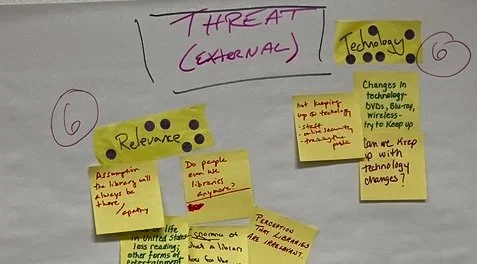Pre-Season Strategic Planning: Discover Before You Decide with SWOT Analysis
As we continue our Pre-Season Strategic Planning series, we’ve already emphasized the importance of executive memos and white papers. But there are two additional tools your leadership or steering team should not overlook: the SWOT analysis and surveys. This week we will talk about SWOT analysis; stay tuned for next week as we dig into surveys.
Remember, we are in the discovery phase of strategic planning. Don’t leap ahead to vision statements, strategic pillars, or shiny new initiatives before collecting the data necessary to chart the right course. Good planning starts with good listening.
The Power of SWOT
A SWOT analysis helps organizations assess both internal and external conditions by examining:
Strengths (internal)
Weaknesses (internal)
Opportunities (external)
Threats (external)
Some organizations also add Successes and Failures for a richer conversation.
A great way to facilitate this analysis is through small, focused roundtable discussions - groups of 12 to 20 people - who can provide insight into the organization or community's strengths, vulnerabilities, and potential. You can host these sessions by functional area (e.g., municipalities, healthcare workers, elder communities) or take a “diagonal slice” approach, mixing voices from across sectors.
We recommend setting up flip charts or easels around the room and working through each SWOT category either as a full group or in rotating breakouts. Always leave time for a facilitated debrief.
Here are sample prompting questions to deepen each section:
Strengths: What do we do well? What unique resources do we have? What do others see as our strengths?
Weaknesses: Where could we improve? Where do we have fewer resources than others? What do others view as our shortcomings?
Opportunities: What trends could we leverage? How can our strengths open new doors?
Threats: What could harm us? What are competitors doing? Where are we exposed due to our weaknesses?
Tips for an Effective SWOT Process:
Conduct multiple SWOT sessions - 5 to 7 across different stakeholder groups throughout the year.
Avoid vague generalizations (e.g., “morale” or “competition”). Press for specifics.
Let identified gaps inform future planning, initiatives, and vision.
Explore external factors like industry trends, economic shifts, patron behavior, and vendor capabilities.
Document each section with narrative clarity to build shared understanding.
Use the SWOT process not just for data collection—but for relationship-building, insight gathering, and even healing.
BONUS: Prioritizing Your SWOT Insights with Dot Voting
If the timing feels right and your group is energized, consider closing your SWOT session with a dot prioritization exercise - a simple, visual way to identify consensus and uncover key themes.
Here’s how it works:
Give each participant 4 sticky dots per SWOT category (a different color per section is helpful, but not required).
Each dot carries a value of one point.
Invite participants to get up and walk around the room - movement stimulates creativity, connection, and engagement.
Ask them to place their dots on the ideas, phrases, or insights they believe are top priorities. They can spread the dots across multiple entries or stack all four on one they feel strongly about.
Once everyone has voted, step back and observe the patterns.
What emerges is a quick visual snapshot of collective priorities. You’ll likely see clusters of dots indicating which Strengths should be leveraged, which Weaknesses need urgent attention, which Opportunities have the most potential, and which Threats feel most urgent.
This process brings clarity, elevates group voices, and provides your team with immediate data you can use to inform your next steps in the strategic planning process.
Pro tip: Take a photo of each flip chart with the dots before cleaning up—you’ll want to revisit and analyze the results later.
